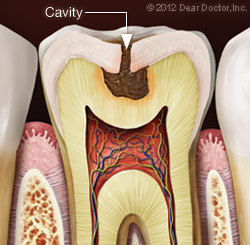 When you get a cavity, it means that bacteria and plaque has built up to the point where it has caused damage to your tooth. If your tooth continues to decay, it can eventually become worn down enough that the nerve tissue (commonly referred to as the “pulp”) is affected and requires a root canal. A filling is meant to fill in and seal the area that’s decayed away, restoring structure to your tooth and preventing the decay from advancing deeper into your tooth.
When you get a cavity, it means that bacteria and plaque has built up to the point where it has caused damage to your tooth. If your tooth continues to decay, it can eventually become worn down enough that the nerve tissue (commonly referred to as the “pulp”) is affected and requires a root canal. A filling is meant to fill in and seal the area that’s decayed away, restoring structure to your tooth and preventing the decay from advancing deeper into your tooth.
Getting A Filling
The first step to getting a filling is determining the severity of the cavity and extent of the decay in your tooth via a series of x-rays. The next step is to clear away all of the damage and decayed area of the tooth. Dr. Johnson will carefully grind away at the decay until only healthy tooth is left, to ensure that when he puts the filling in, the decay can’t rot away your tooth from the inside. Finally, after the cavity has been cleared of debris, your dentist will place the filling and seal the space.
During the procedure, we usually use anesthetic injection in order to numb your tooth to alleviate any discomfort. However, if numbing injections cause you anxiety, we’d be more than happy to accommodate you by using nitrous oxide as an alternative numbing method. At the practice of Dr. Christian Johnson, it’s our priority to ensure that you are comfortable while getting the quality dental treatment you deserve.
Types of Fillings
Within the ever-advancing field of dentistry, fillings have been improved upon through using different types of materials, each with their own advantages. At the office of Dr. Christian Johnson, we are happy to offer a wide range of filling options in order to better meet the varying needs of all of our patients.
The different options of filling materials fall into two main categories: Metal & Tooth-Colored. Below are the options available in each category.
Metal Fillings
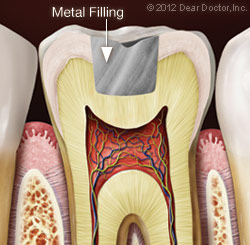
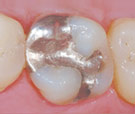 Amalgam — This is the classic silver filling that is extremely common due to it being very durable and very inexpensive at the same time. The amalgam is an alloy that is composed of various metals, including mercury, silver, tin, and copper. When mixed together, these metals are not only safe, but create a durable material that will help protect your tooth. The only downsides to this type of filling are that they are noticeable, and usually require slightly more drilling when preparing your tooth.
Amalgam — This is the classic silver filling that is extremely common due to it being very durable and very inexpensive at the same time. The amalgam is an alloy that is composed of various metals, including mercury, silver, tin, and copper. When mixed together, these metals are not only safe, but create a durable material that will help protect your tooth. The only downsides to this type of filling are that they are noticeable, and usually require slightly more drilling when preparing your tooth.
Cast Gold — While fairly expensive, gold fillings are very durable and made to last for a very long time. Just like its silver amalgam counterpart, this type of filling is very noticeable, but could also be a cosmetic choice.
Tooth-Colored Fillings
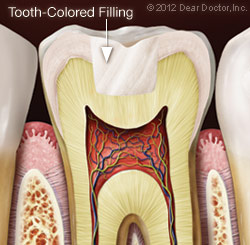
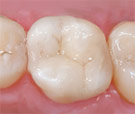 Composite — Among the most common types of fillings available today, the composite material is a mixture of plastic and glass, making for a strong filling that can last longer than the normal amalgam metal filling. The big advantage for the composite is that it can be made to match the color of your tooth, making for a more natural looking smile. The slight downside to composites is that they are still susceptible to staining like your normal teeth.
Composite — Among the most common types of fillings available today, the composite material is a mixture of plastic and glass, making for a strong filling that can last longer than the normal amalgam metal filling. The big advantage for the composite is that it can be made to match the color of your tooth, making for a more natural looking smile. The slight downside to composites is that they are still susceptible to staining like your normal teeth.
Porcelain — Compared to composite fillings, the porcelain material also matched tooth coloration and proves to be more resistant to staining, but can also be more brittle, requiring more careful care, especially when eating. The fillings need to be created in a dental laboratory using advanced digital imaging technology on your tooth to create the perfect fit, which in turn makes this option more expensive.
Glass Ionomer — Instead of matching your tooth color exactly, this mixture of acrylic and glass makes a translucent material that will difficult to see, and blends in with your tooth. The main advantage of this type of filling is that it is designed to release a tiny amount of fluoride that will help prevent your decay of the filling and the rest of your tooth.
Watch Tooth-Colored Fillings Video
What to Expect After Getting a Filling
A few hours after the procedure is finished, the numbness from the anesthesia should wear off after just a few hours, but in that time it’s recommended that you avoid drinking hot or cold liquids, or eating on that side of your mouth. It’s common for you to experience some sensitivity to hot and cold for at least the first few weeks. If you continue to have sensitivity or even feel pain after a few weeks have passed, schedule an appointment with us so we can see if your filling needs to be adjusted. Make sure you also keep up with your regularly scheduled dentist visits for a full cleaning at least twice a year.
Schedule Your Appointment With Dr. Johnson Today!
If you’re looking to get a filling, or have any questions about the process of getting a filling, contact us and we’ll help you get all of the information you need, and walk you through the process of meeting your dental needs. Dr. Johnson and our dental staff are committed to providing the quality dental treatment our practice is known for, spreading smiles from Waldorf and Brandywine to La Plata and Hughesville. Schedule your appointment today!
Related Articles
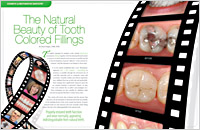
The Natural Beauty of Tooth-Colored Fillings The public's demand for aesthetic tooth-colored (metal free) restorations (fillings) together with the dental profession's desire to preserve as much natural tooth structure as possible, has led to the development of special “adhesive” tooth-colored restorations... Read Article
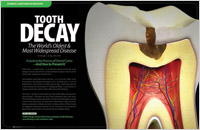
Tooth Decay — A Preventable Disease Tooth decay is the number one reason children and adults lose teeth during their lifetime. Yet many people don't realize that it is a preventable infection. This article explores the causes of tooth decay, its prevention, and the relationship to bacteria, sugars, and acids... Read Article
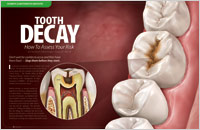
Tooth Decay – How To Assess Your Risk Don't wait for cavities to occur and then have them fixed — stop them before they start. Modern dentistry is moving towards an approach to managing tooth decay that is evidence-based — on years of accumulated, systematic, and valid scientific research. This article discusses what you need to know to assess your risk and change the conditions that lead to decay... Read Article